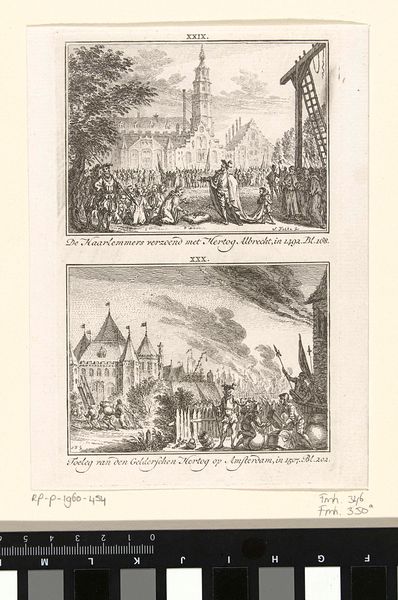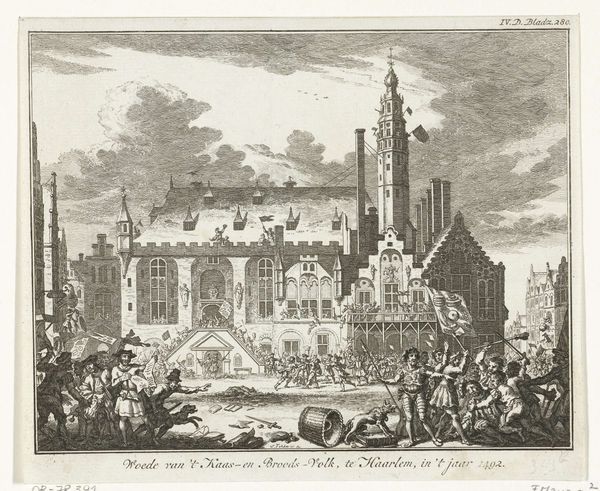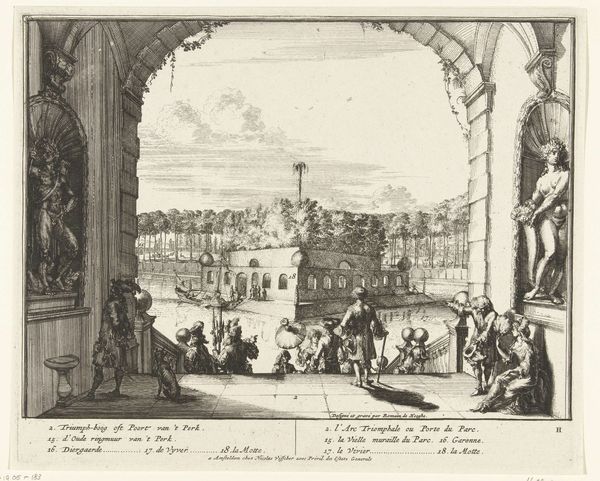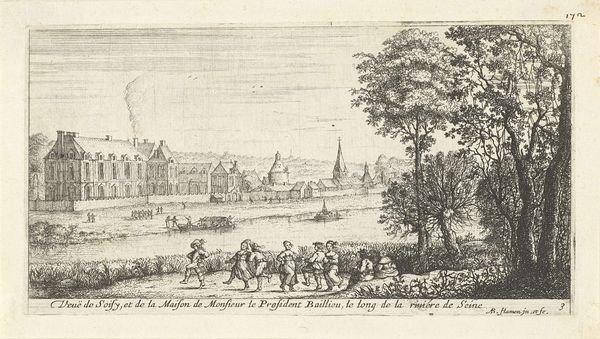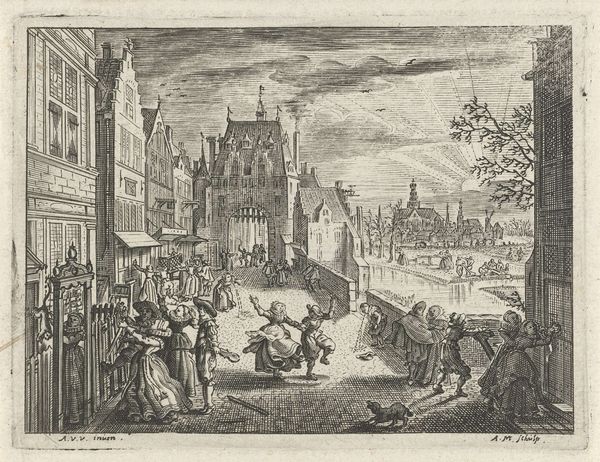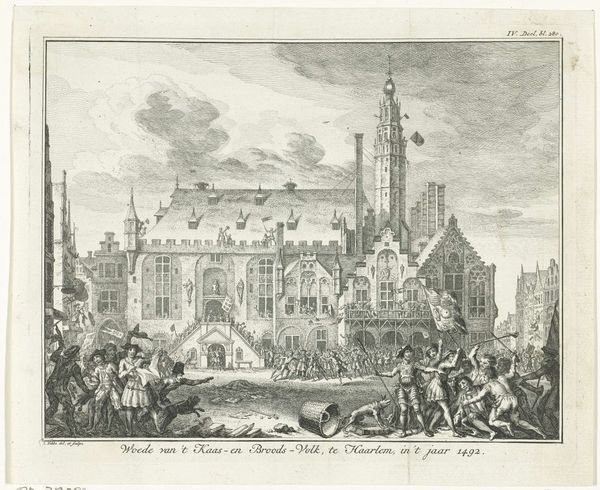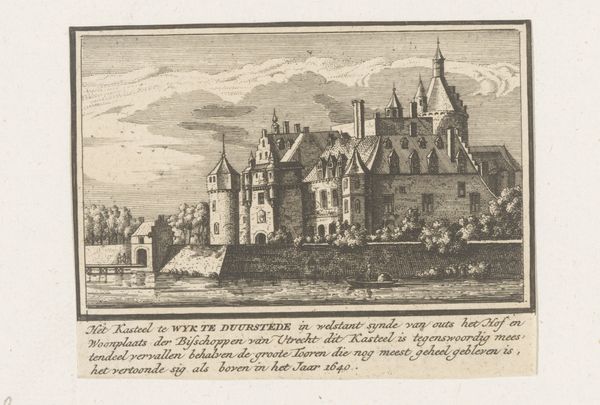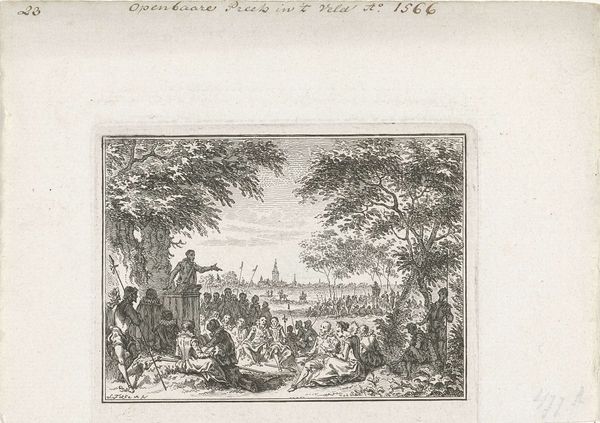
print, etching, engraving
# print
#
pen sketch
#
etching
#
old engraving style
#
etching
#
cityscape
#
history-painting
#
northern-renaissance
#
engraving
Dimensions: height 88 mm, width 109 mm
Copyright: Rijks Museum: Open Domain
Editor: Here we have Simon Fokke's "Troepen Karel van Gelre buiten Amsterdam, 1507," an etching and engraving from around 1782-1784. The scene is quite chaotic, with lots of figures and architectural details, but there's a real sense of drama. How do you read this work? Curator: What immediately strikes me is the date. While it depicts events of 1507, the print itself was created much later, in the late 18th century. What does it mean to revisit and represent this historical moment during a period of significant political and social upheaval? How does this historical portrayal relate to notions of Dutch identity and perhaps even resistance during Fokke's own time? Editor: So, you’re suggesting the artist might be making a commentary on the politics of *his* time, through a historical lens? Curator: Precisely. The "attack" itself is part of a power struggle. Amsterdam, and by extension, the etching, are also about questions of dominance and control. What details in the composition strike you as particularly telling about this dynamic? For example, who seems to hold the power in the depiction? Who are the victims and who are the aggressors? Editor: I see soldiers carrying supplies toward a walled city, maybe suggesting siege tactics. The figures are really small, but you’re right—they show signs of resistance, weapons and flags raised. Is it possible Fokke's making a point about historical power struggles, but also the role of common people to endure the domination in question? Curator: Exactly. And what happens when that 'common people' find themselves reflected as one or another actor inside those very oppressions and power imbalances? In fact, revisiting history as a way of understanding current socio-political conditions is an ongoing, if sometimes problematic, artistic strategy. I'm left thinking, can historical art pieces function as mirror for present times? Editor: That gives me a lot to think about – both the historical context and how it might resonate today. Thanks for sharing a different way of considering history.
Comments
No comments
Be the first to comment and join the conversation on the ultimate creative platform.


